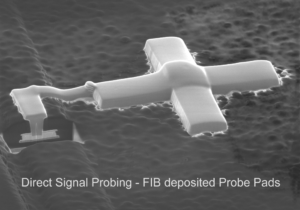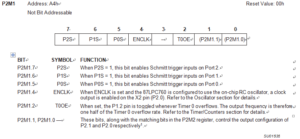Crack MCU P87LPC764 Embedded Firmware
Crack MCU P87LPC764 Embedded Firmware need to figure out the configuration of it, some pins on the microcontroller can not be configured, The three port pins that cannot be configured are P1.2, P1.3, and P1.5. The port pins P1.2 and P1.3 are permanently configured as open drain outputs.
They may be used as inputs by writing ones to their respective port latches. P1.5 may be used as a Schmitt trigger input if the P87LPC764 has been configured for an internal reset and is not using the external reset input function RST.

Crack MCU P87LPC764 Embedded Firmware
Additionally, port pins P2.0 and P2.1 are disabled for both input and output if one of the crystal oscillator options is chosen. Those options are described in the Oscillator section.
The value of port pins at reset is determined by the PRHI bit in the UCFG1 register. Ports may be configured to reset high or low as needed for the application. When port pins are driven high at reset, they are in quasi-bidirectional mode and therefore do not source large amounts of current which applied the similar procedures of MCU P89CV51 Locked Code cracking.
Every output on the P87LPC764 may potentially be used as a 20 mA sink LED drive output. However, there is a maximum total output current for all ports which must not be exceeded.
All ports pins of the P87LPC764 have slew rate controlled outputs. This is to limit noise generated by quickly switching output signals. The slew rate is factory set to approximately 10 ns rise and fall times.
The bits in the P2M1 register that are not used to control configuration of P2.1 and P2.0 are used for other purposes. These bits can enable Schmitt trigger inputs on each I/O port, enable toggle outputs from Timer 0 and Timer 1, and enable a clock output if either the internal RC oscillator or external clock input is being used to faciliate the process of MCU IC NXP LPC2361 cracking. The last two functions are described in the Timer/Counters and Oscillator sections respectively. The enable bits for all of these functions are shown in below Figure.
Each I/O port of the P87LPC764 may be selected to use TTL level inputs or Schmitt inputs with hysteresis. A single configuration bit determines this selection for the entire port. Port pins P1.2, P1.3, and P1.5 always have a Schmitt trigger input.


